World Vision Syria Response's Multi-faceted Project
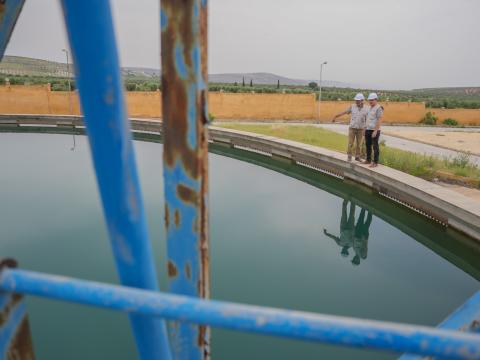
Since the Syria earthquake struck, World Vision Syria Response and its local implementing partner ULUSLARARASI INSANI YARDIMLAŞMA DERNEĞI [IYD] immediately began implementing a water provision, desludging and solid waste management [WASH] project services under the project’s first phase beginning from 9 February 2023 to 31 July 2023 benefiting more than 2.5 million people.
Knowing how dire the humanitarian situation has been after the conflict and now the earthquake damaging an already neglected infrastructure, an immediate intervention was planned. World Vision Syria Response and IYD continued their dedicated efforts to provide over 3.2 million people so far with essential WASH services under the project’s second phase.
The second phase of the project began in 1 August 2023 and will continue until January 2025 further scaling up phase one services through both direct implementation and through IYD. These services still include water station construction and rehabilitation, water trucking, and desludging later including installing solar panels supporting the water pumping station with green energy in one of the Northwestern cities.
With funding from Disasters Emergency Committee, World Vision Syria Response and ULUSLARARASI INSANI YARDIMLAŞMA DERNEĞI currently supports 5.7 million.
Area One
Through partner and direct implementation
![World Vision Syria Response Partner maintaining the water stations[left] and later pumping water to internally displaced Syrians [right], the solar panels operating the stations [photo in the middle]. World Vision Syria Response Partner, ULUSLARARASI INSANI YARDIMLAŞMA DERNEĞI](/sites/default/files/inline-images/1_59.jpg)
World Vision Syria Response Partner, ULUSLARARASI INSANI YARDIMLAŞMA DERNEĞI
![World Vision Syria Response Partner maintaining the water stations[left] and later pumping water to internally displaced Syrians [right], the solar panels operating the stations [photo in the middle]. World Vision Syria Response Partner, ULUSLARARASI INSANI YARDIMLAŞMA DERNEĞI](/sites/default/files/inline-images/3_39.jpg)
World Vision Syria Response Partner, ULUSLARARASI INSANI YARDIMLAŞMA DERNEĞI
World Vision Syria Response through its implementing partner ensure that the water pumping stations maintain their work at full capacity daily pumping 6,700 cubic meters to internally displaced houses. Regular maintenance and improvements are frequently introduced to the common stations powered by a solar panel system enabling them to work 14 hours daily.
Sarah* is one of the people who benefit from the water provision services she shares, “We don’t have anything after the earthquake. Everything we owned remained under the rubble. We currently live in a displacement camp however, water is expensive as we cannot afford it. But now [after the project implementation] we have water available daily”
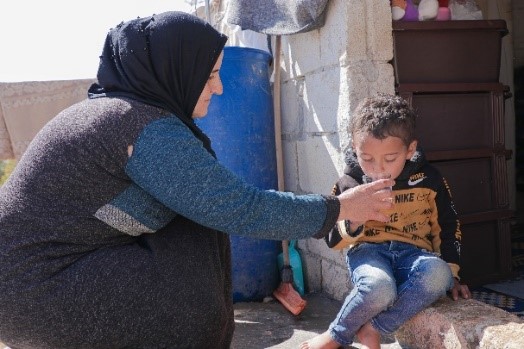
World Vision Syria Response Partner, ULUSLARARASI INSANI YARDIMLAŞMA DERNEĞI
The project operates 11 water stations between World Vision Syria Response and IYD and most recently, a new water station is being constructed by IYD ensuring that more people have access to clean water in that area. World Vision Syria Response also operates nine water stations directly pumping 7,200 cubic meters for 12 hours a day.
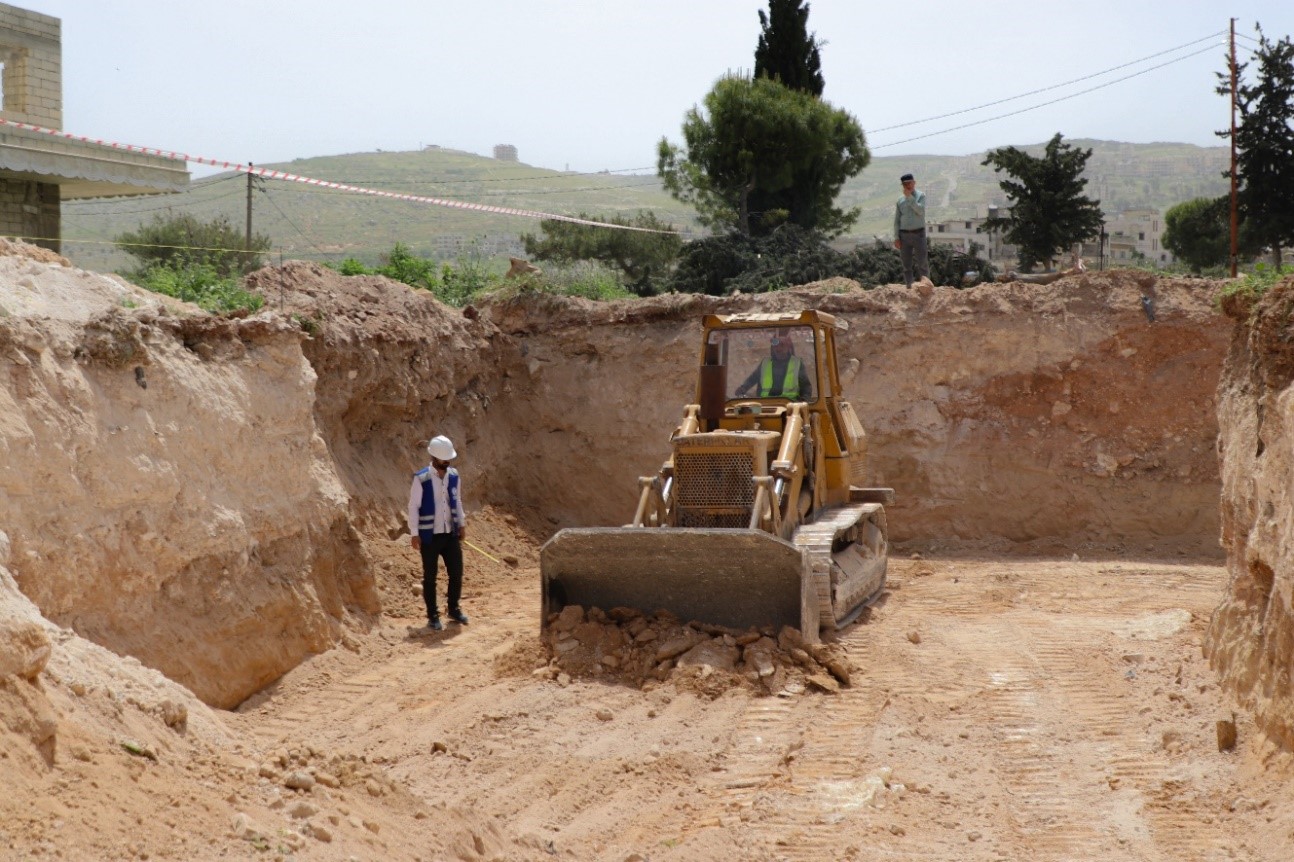
World Vision Syria Response Partner, ULUSLARARASI INSANI YARDIMLAŞMA DERNEĞI
![World Vision Syria Response Partner during the SWM [left] and desludging services [right]. World Vision Syria Response Partner, ULUSLARARASI INSANI YARDIMLAŞMA DERNEĞI](/sites/default/files/inline-images/1_63.jpg)
World Vision Syria Response Partner, ULUSLARARASI INSANI YARDIMLAŞMA DERNEĞI
![World Vision Syria Response Partner during the SWM [left] and desludging services [right]. World Vision Syria Response Partner, ULUSLARARASI INSANI YARDIMLAŞMA DERNEĞI](/sites/default/files/inline-images/2_68.jpg)
World Vision Syria Response Partner, ULUSLARARASI INSANI YARDIMLAŞMA DERNEĞI
In addition to the water provision services, solid waste management and desludging services are provided to more than 122,000 people living in displacement camps.
Layan* is among the internally displaced Syrians who benefitted from the SWM and desludging services. “Such services are crucial to avoid the bad odour and prevent the outbreak of diseases and spread of insects”.
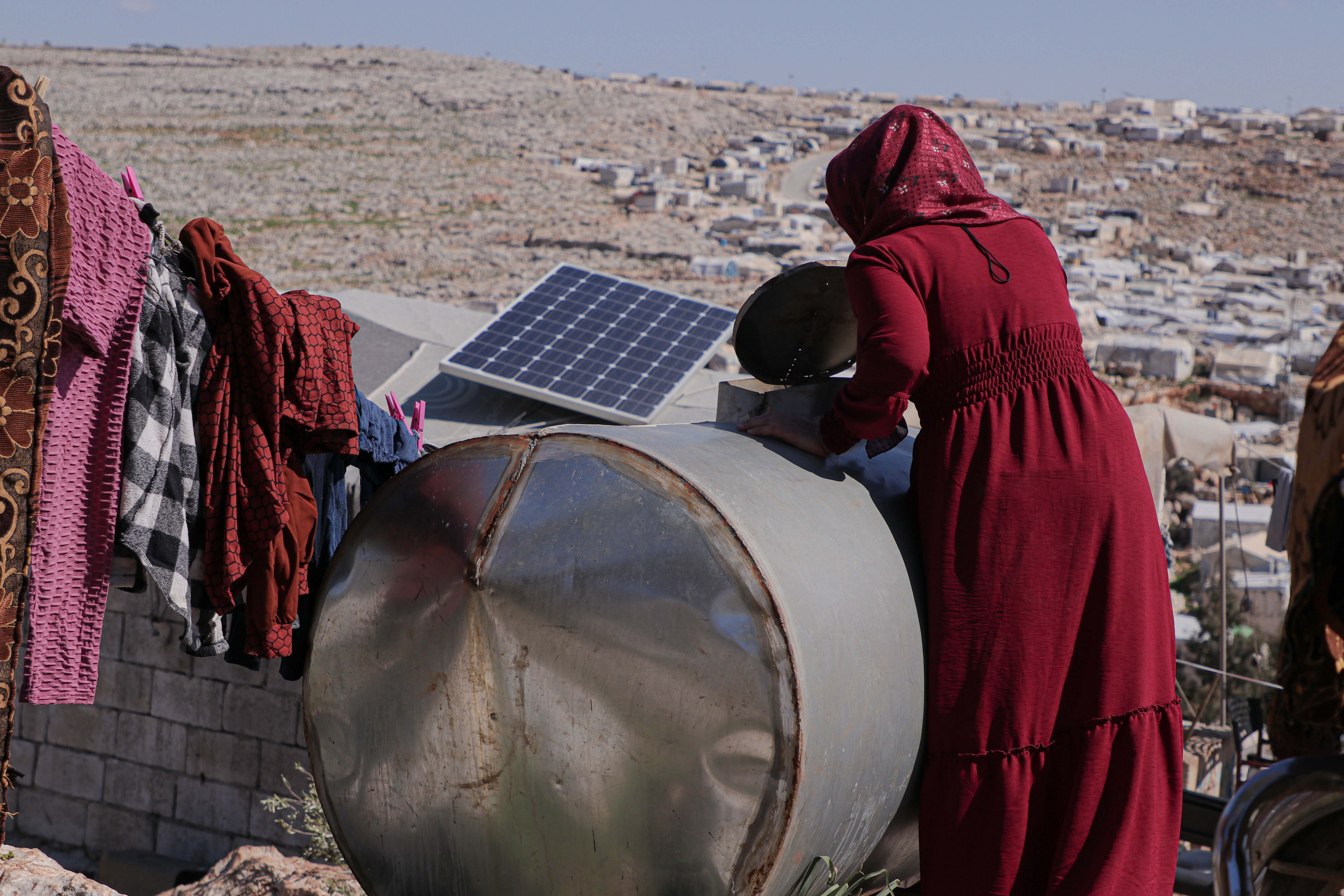
World Vision Syria Response Partner, ULUSLARARASI INSANI YARDIMLAŞMA DERNEĞI
Area Two
Direct implementation
World Vision Syria Response directly implements a segment of the project which includes the solar-powered water pumping station in the Northeast.
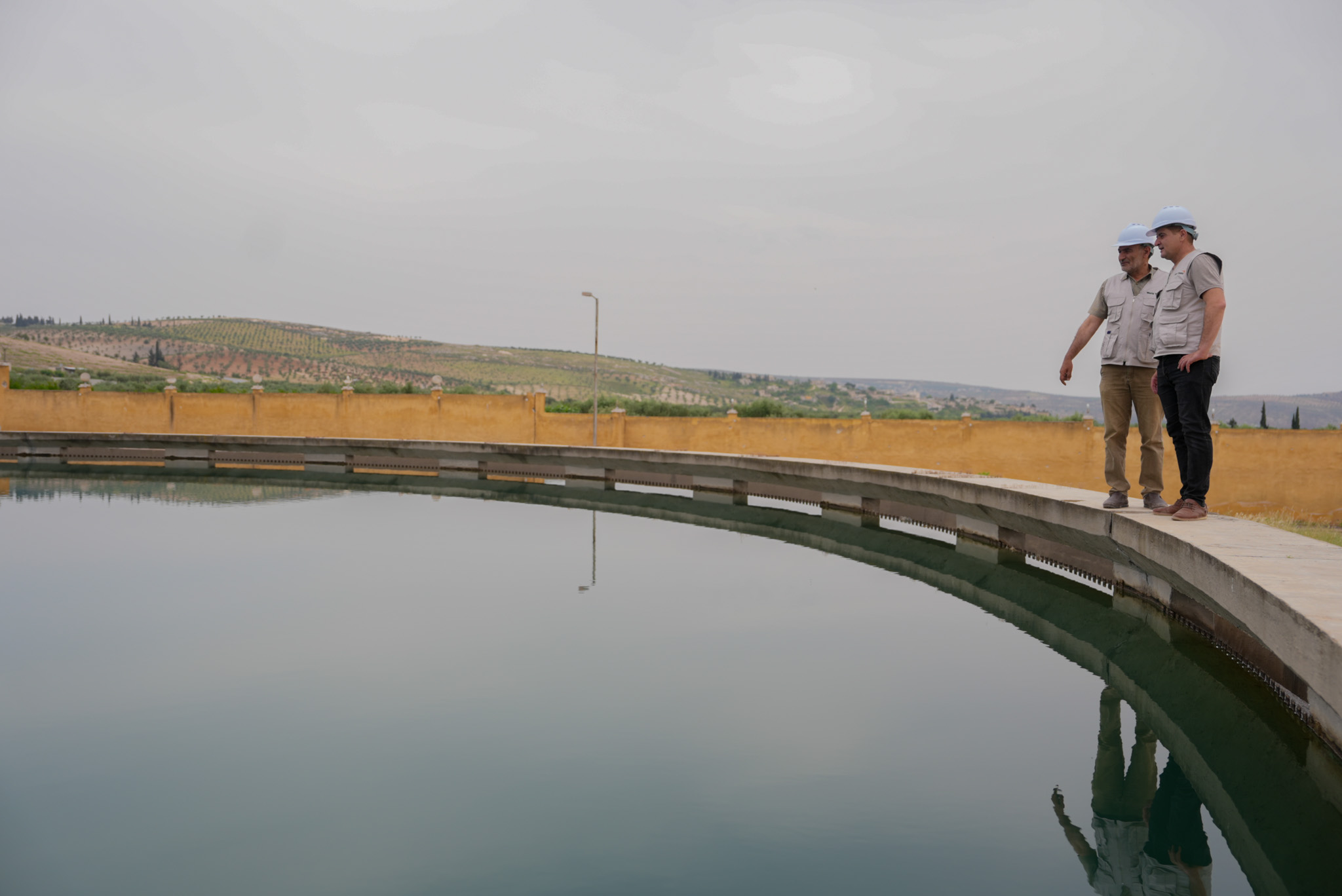
World Vision Syria Response, Zaher Jaber
Before water is distributed to homes, it sits in a main water tank that can store 7,000 cubic meters of water, allowing impurities in the water to start precipitating.
After which a long process of water purification occurs consisting of three stages, at first water is pumped from the main tank to another kick-starting the chlorination processes. The second directs this water to another tank to ensure any other impurities are removed. The last step is storing the clean water in an underground water tank with a capacity of 40,000 cubic meters before being distributed to homes.
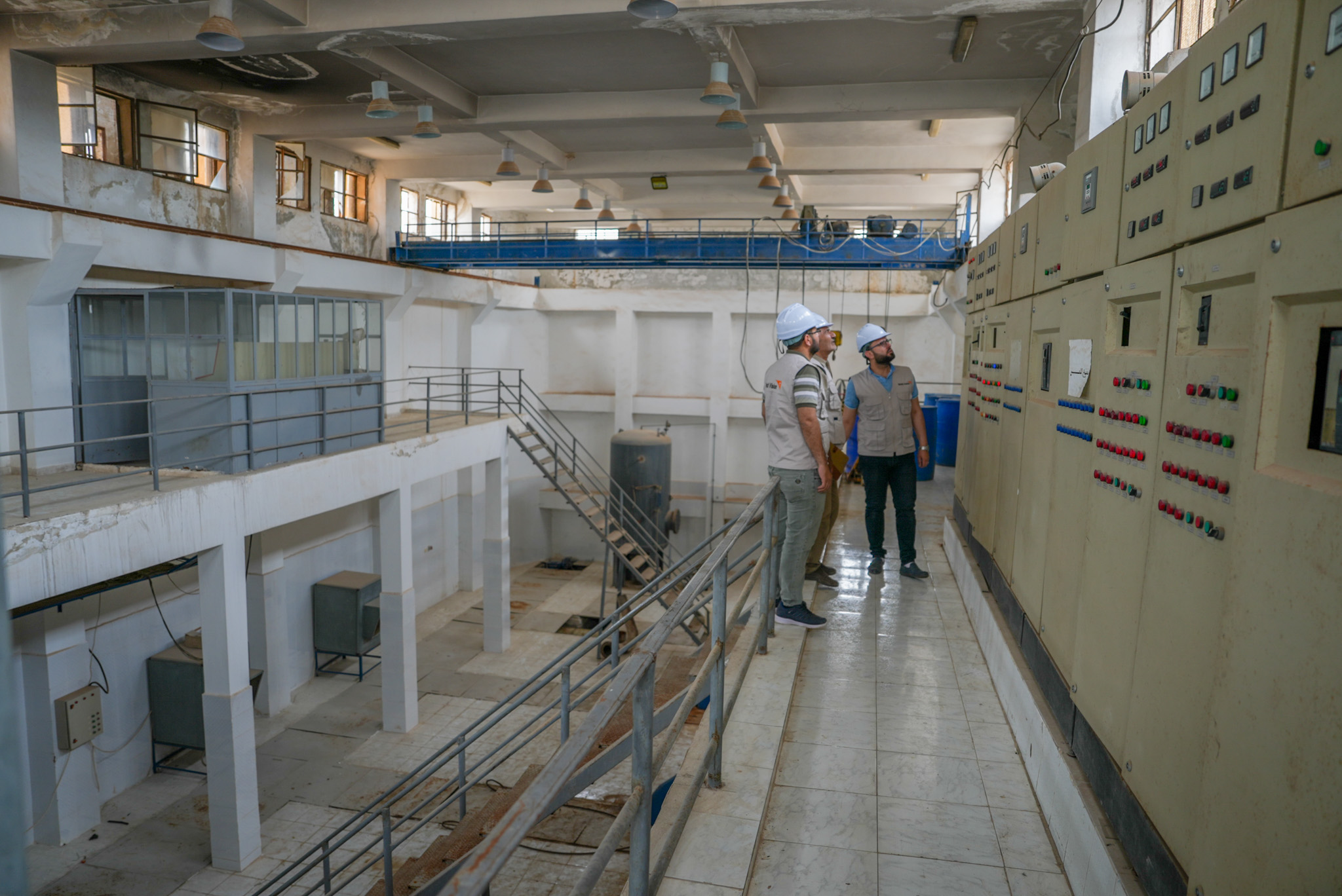
World Vision Syria Response, Zaher Jaber
After which a long process of water purification occurs consisting of three stages, at first water is pumped from the main tank to another kick-starting the chlorination processes. The second directs this water to another tank to ensure any other impurities are removed. The last step is storing the clean water in an underground water tank with a capacity of 40,000 cubic meters before being distributed to homes.
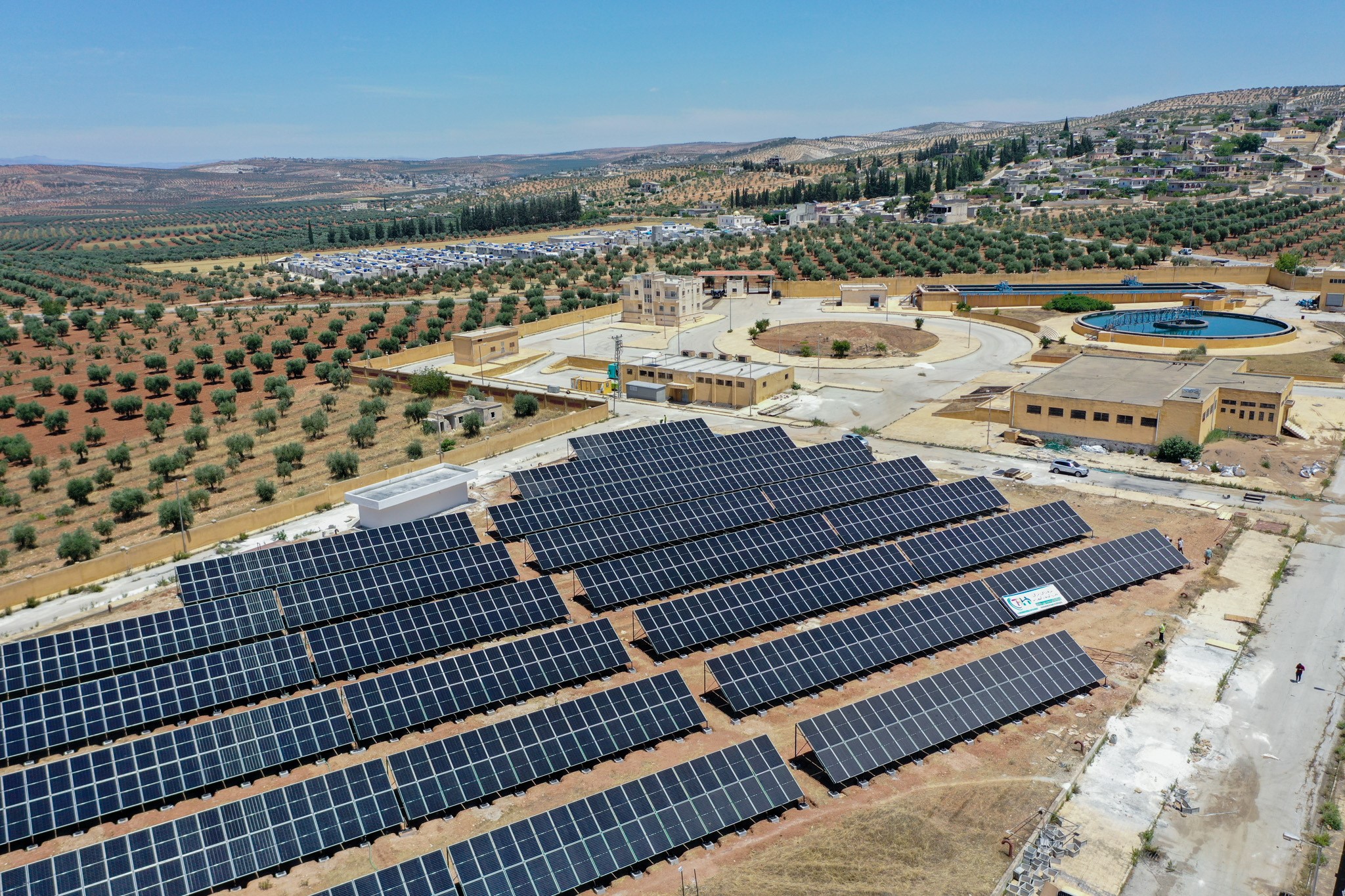
World Vision Syria Response, Zaher Jaber
In order for the water station to operate, it needs energy. Therefore, 1,040 solar panels spread over 8,300 M of land with 600 kilowatts-hour are used to generate green electricity- the underground tank is placed under the solar panels.
On average, the water is pumped 10 hours every day later providing 6,000 cubic meters ensuring availability for Syrians living in the governorate.
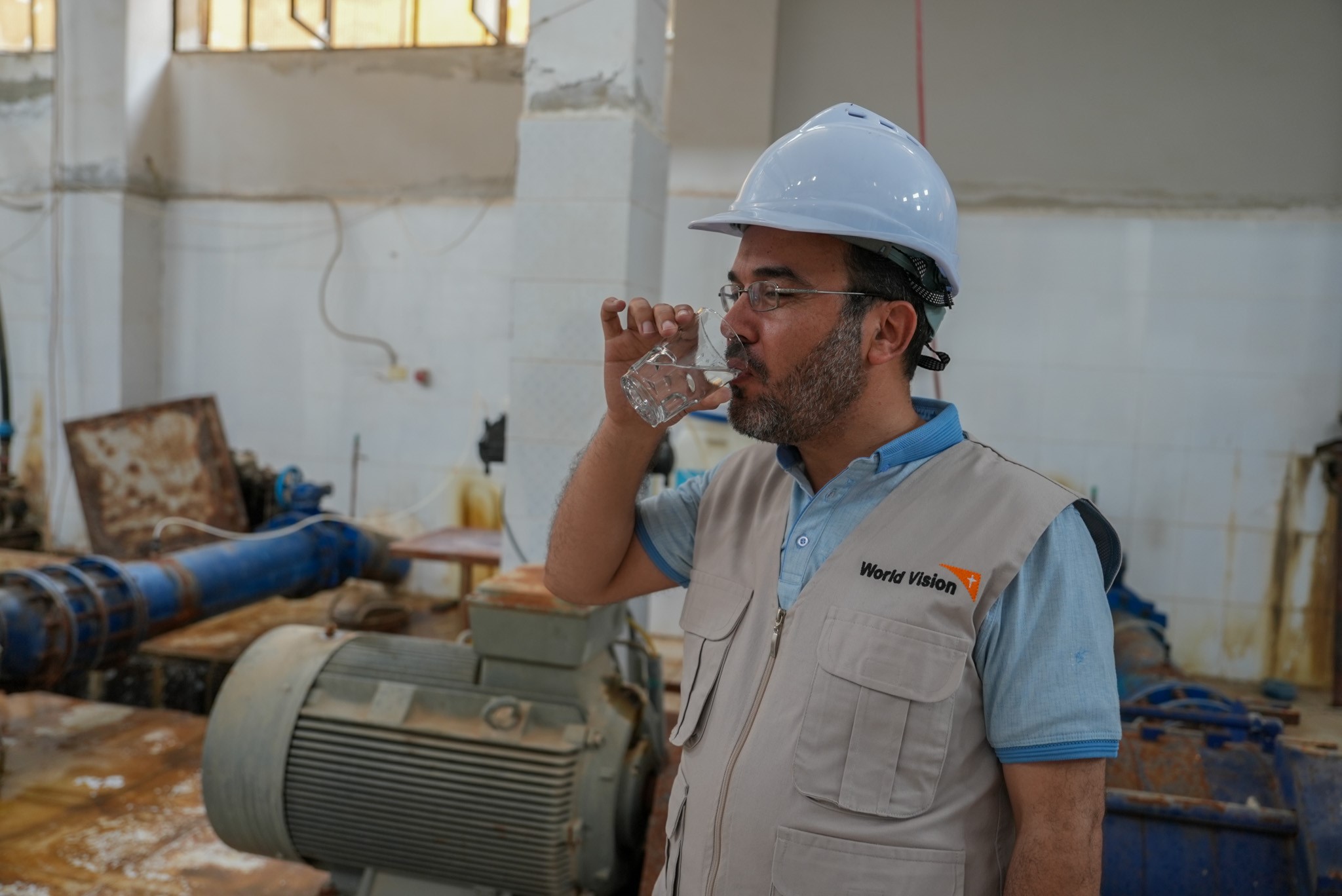
World Vision Syria Response, Zaher Jaber
Such projects will relieve them from a heavy burden as the prices for basic items including water keep increasing in Syria.
